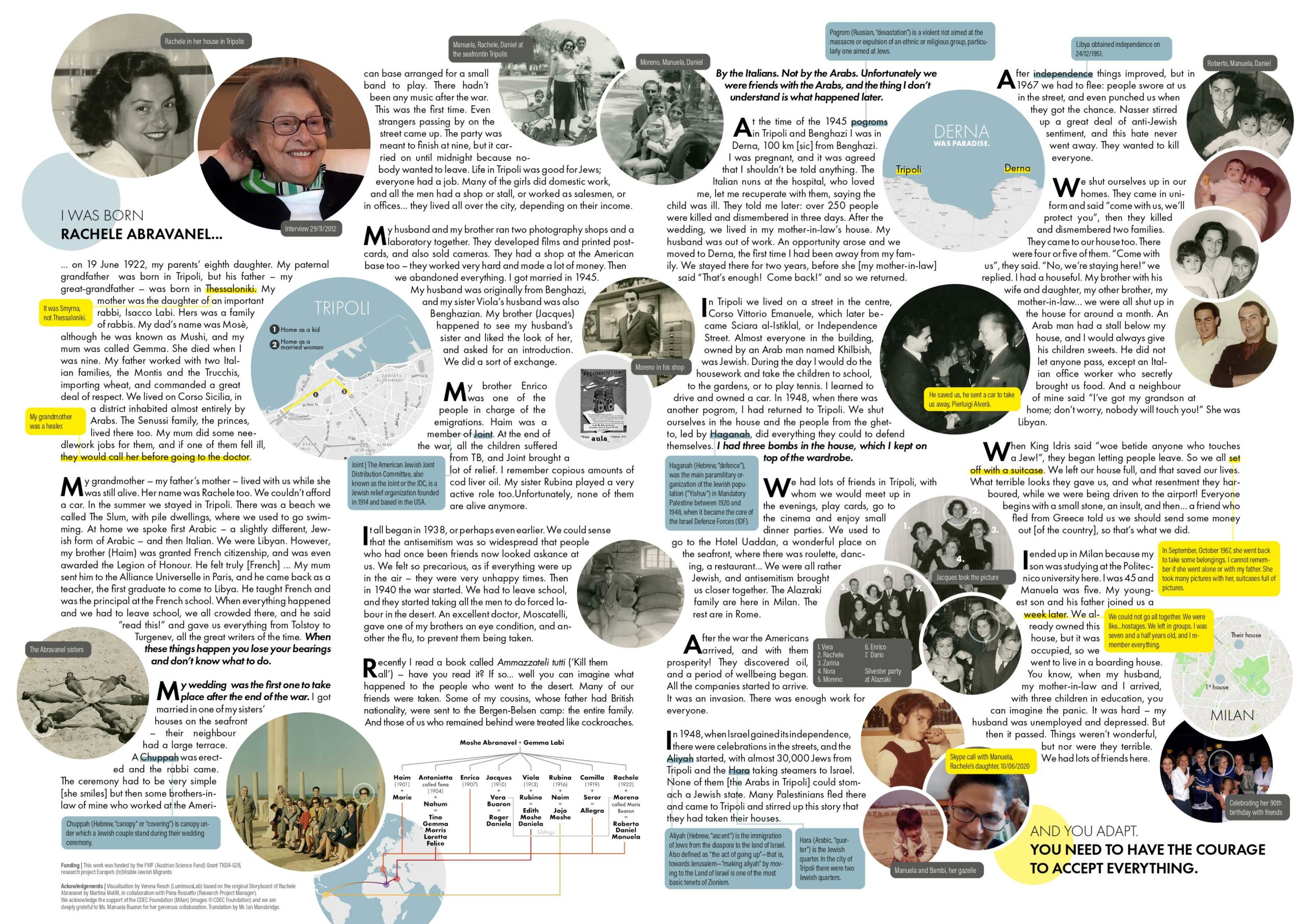Rachele’s story passed from hand to hand and another visualization took form. In this case, I asked Verena Resch, graphic designer, to transform the Storyboard Rachele Abravanel by Martina Melilli into a digital product. Melilli’s storyboard, realised on a physical support, with printed pictures and post-it for comments and explanations, had a limited possiblity of circulation. Verena’s challenge was to take in her hands this hand-made creation and transform it into something able to cross physical borders.

Digital Storyboard (2020), by Verena Resch
The Digital Storyboard represents Resch’s interpretation of Melilli’s original visualization. Being used to work in the life science field, Resch main challenge was to deal with so much text. As she told me while discussing her experience with Rachele’s story, the most common reccomendation she gives to her clients in the life science field, is keeping text to the minimum. As she realised that the text, the story, is the heart of this project, she understood that this advice was not applicable to this case. Resch found technical solutions to enhance readability as well as to express the eventfullness and non-linenarity of Rachele’s story.
The Digital Storyboard represents, in the project’s framework, a way to engage with the digital turn in doing memory research (Garde-Hansen et al. 2009; Drozdzewski and Birdsall 2019) as well as with the exponential growth of digital projects in the context of the history of Jews from Arab and Muslim countries.